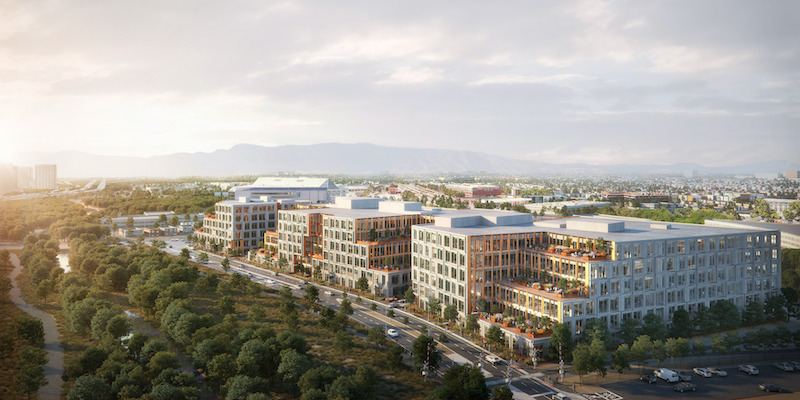Platform 16, a 1,200,000-sf, three-building office campus, has recently broken ground in Downtown San Jose. The Kohn Pedersen Fox-designed project will be located on a 5.4-acre site adjacent to Google's planned transit village and Diridon Station, a major Bay Area transportation hub.
Platform 16 will include a main facade with three module orientations (center, left, and right) to create a sense of depth and texture by breaking down the building's scale and creating a shimmering effect in the sun's reflection. The low, horizontal mass recedes from the street as it steps up to create large terraces at every level. These terraces will provide significant outdoor space for tenants, while also bringing daylight deep into Platform 16's interiors. The bronze terrace facade will contrast with the main wall in materiality and scale.
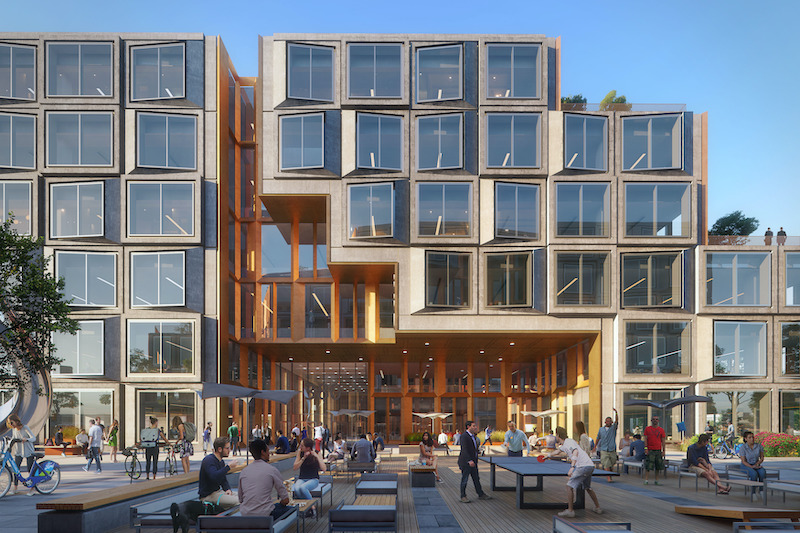 Courtesy Plompmozes for KPF.
Courtesy Plompmozes for KPF.
The project's combination of a high-performance facade, passive cooling systems, high efficiency lighting systems, and a solar PV roof covering 20% of the building have the building projected to outperform the AIA 2030 Commitment goal of 80% reduction against its baseline.
See Also: A resort with a giant artificial wave basin is being planned for southern California
Platform 16 will also provide immediate pedestrian access to the neighborhood and transit access to the Bay Area at large. On its south side, San Pedro Square will become a flexible public realm with access to the city's financial center, the SAP Center, and Diridon Station.
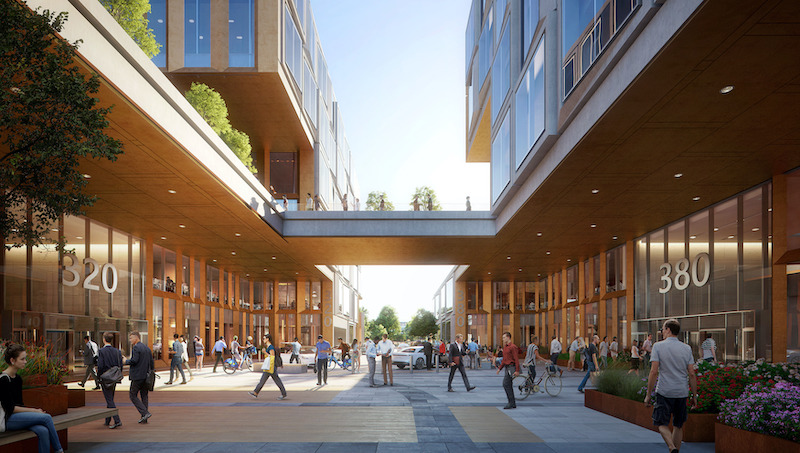 Courtesy Plompmozes for KPF.
Courtesy Plompmozes for KPF.
Other project features include various active pedestrian plazas, expansive floorplates, and 15-foot floor-to-floor heights.
The first phase of construction is slated for completion in 2023.
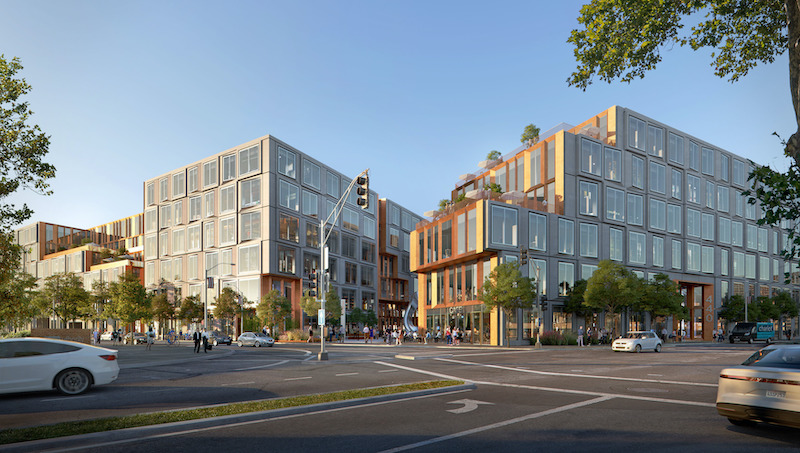 Courtesy KPF.
Courtesy KPF.
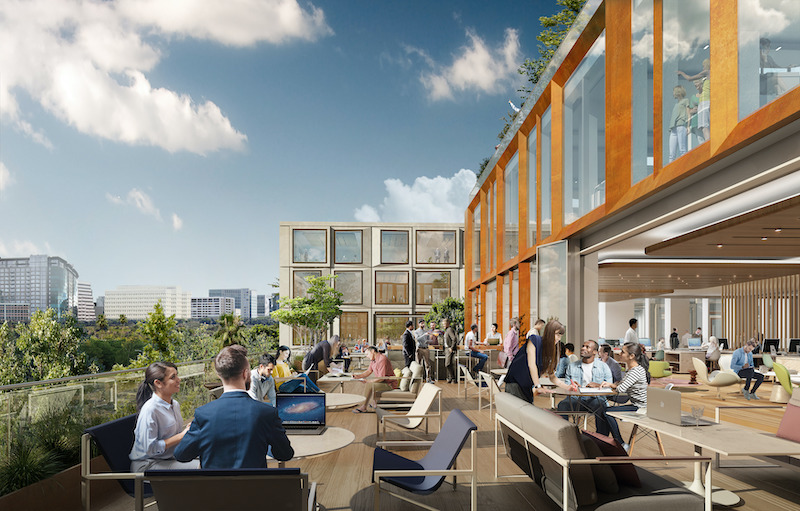 Courtesy Byencore for KPF.
Courtesy Byencore for KPF.
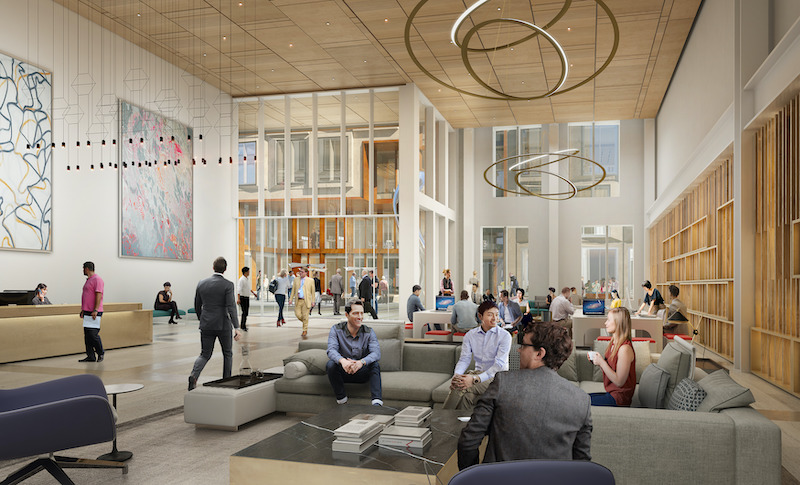 Courtesy Byencore for KPF.
Courtesy Byencore for KPF.
 Courtesy Byencore for KPF.
Courtesy Byencore for KPF.
 Courtesy Byencore for KPF.
Courtesy Byencore for KPF.
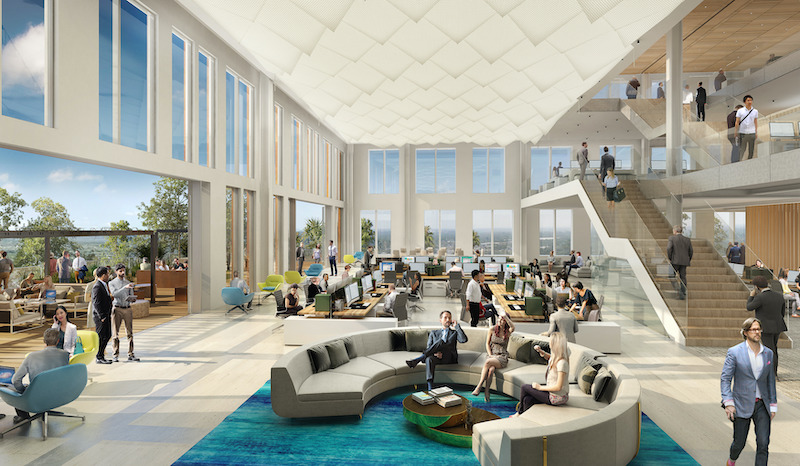 Courtesy Byencore for KPF.
Courtesy Byencore for KPF.
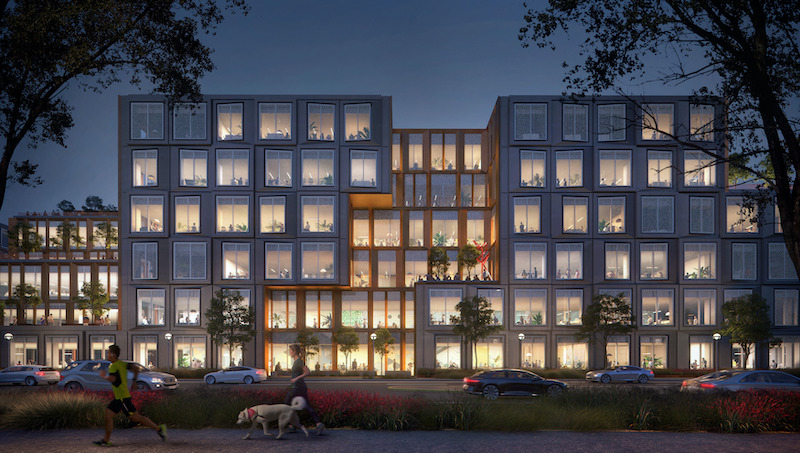 Courtesy Plompmozes for KPF.
Courtesy Plompmozes for KPF.
Related Stories
Green | Jun 26, 2023
Federal government will spend $30 million on novel green building technologies
The U.S. General Services Administration (GSA), and the U.S. Department of Energy (DOE) will invest $30 million from the Inflation Reduction Act to increase the sustainability of federal buildings by testing novel technologies. The vehicle for that effort, the Green Proving Ground (GPG) program, will invest in American-made technologies to help increase federal electric vehicle supply equipment, protect air quality, reduce climate pollution, and enhance building performance.
Office Buildings | Jun 26, 2023
Electric vehicle chargers are top priority for corporate office renters
Businesses that rent office space view electric vehicle (EV) charging stations as a top priority. More than 40% of companies in the Americas and EMEA (Europe, the Middle East and Africa) are looking to include EV charging stations in future leases, according to JLL’s 2023 Responsible Real Estate study.
Laboratories | Jun 23, 2023
A New Jersey development represents the state’s largest-ever investment in life sciences and medical education
In New Brunswick, N.J., a life sciences development that’s now underway aims to bring together academics and researchers to work, learn, and experiment under one roof. HELIX Health + Life Science Exchange is an innovation district under development on a four-acre downtown site. At $731 million, HELIX, which will be built in three phases, represents New Jersey’s largest-ever investment in life sciences and medical education, according to a press statement.
Office Buildings | Jun 15, 2023
An office building near DFW Airport is now home to two Alphabet companies
A five-minute drive from the Dallas-Fort Worth International Airport, the recently built 2999 Olympus is now home to two Alphabet companies: Verily, a life sciences business, and Wing, a drone delivery company. Verily and Wing occupy the top floor (32,000 sf and 4,000 sf, respectively) of the 10-story building, located in the lakeside, work-life-play development of Cypress Waters.
Engineers | Jun 14, 2023
The high cost of low maintenance
Walter P Moore’s Javier Balma, PhD, PE, SE, and Webb Wright, PE, identify the primary causes of engineering failures, define proactive versus reactive maintenance, recognize the reasons for deferred maintenance, and identify the financial and safety risks related to deferred maintenance.
Mixed-Use | Jun 12, 2023
Goettsch Partners completes its largest China project to date: a mixed-used, five-tower complex
Chicago-based global architecture firm Goettsch Partners (GP) recently announced the completion of its largest project in China to date: the China Resources Qianhai Center, a mixed-use complex in the Qianhai district of Shenzhen. Developed by CR Land, the project includes five towers totaling almost 472,000 square meters (4.6 million sf).
Mixed-Use | Jun 6, 2023
Public-private partnerships crucial to central business district revitalization
Central Business Districts are under pressure to keep themselves relevant as they face competition from new, vibrant mixed-use neighborhoods emerging across the world’s largest cities.
Energy-Efficient Design | Jun 5, 2023
Implementing an ‘asset drawdown strategy’ for site decarbonization
Solidifying a decarbonization plan via an “asset drawdown strategy” that carefully considers both capital and operating costs represents a game-changing opportunity for existing properties to compete with new projects.
Office Buildings | Jun 5, 2023
Office design in the era of Gen Z, AI, and the metaverse
HOK workplace and interior design experts Kay Sargent and Tom Polucci share how the hybrid office is evolving in the era of artificial intelligence, Gen Z, and the metaverse.
Urban Planning | Jun 2, 2023
Designing a pedestrian-focused city in downtown Phoenix
What makes a city walkable? Shepley Bulfinch's Omar Bailey, AIA, LEED AP, NOMA, believes pedestrian focused cities benefit most when they're not only easy to navigate, but also create spaces where people can live, work, and play.


